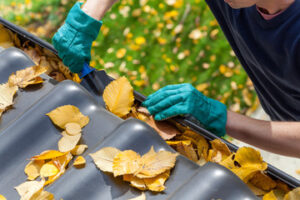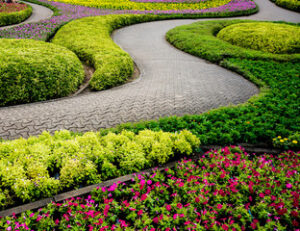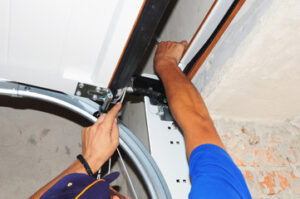Keeping your gutters in good working condition is vital to the health of your home. Gutter repairs help to catch water from your roof and channel it away from the foundation, protecting your home from serious damage. Depending on the extent of the damage, Gutter Repair Murfreesboro TN can cost a variety of amounts.

Gutter leaks are more than just a nuisance; they can cause serious damage that affects the safety, integrity, and condition of a home or building. Water leaking from gutters can rot wood fascia boards, warp siding, damage foundations, and even promote mildew and mold growth. Keeping up with routine maintenance and promptly addressing problems can prevent water damage and save property owners costly repair bills.
Leaky gutters are often caused by separated or cracked gutter joints. Over time the seals on these joints may degrade or the fittings may come loose. The first step in addressing this problem is to remove the affected joint and clean it. This should involve removing any dirt, grime or grit from the joint and cleaning off any excess soap. Once this is done the joint can be resealed with gutter caulk or sealant.
Another common reason for a leaking gutter is an improper pitch. Gutters should be pitched slightly to ensure that they flow towards downspouts. Over time, however, the pitch of a gutter might change due to wear and tear, clogs or the weight of debris. If the pitch changes, it will cause the water to collect on one side of the gutter and leak out onto the roof or other areas of the house or building.
Finally, it is important to check for loose fasteners. These fasteners are used to secure the gutters to the fascia boards of the home or building. Over time, these fasteners can become loose and allow the gutter to shift. This can cause the gutter to rip away from the house or other structural components and create a leak.
Fortunately, most of these issues can be addressed with some basic maintenance and DIY skills. In many cases, resealing elbow joints with gutter sealant or tightening loose fasteners can help to resolve the issue and keep water flowing properly. In some cases, however, it might be necessary to replace a section of the gutter or the entire gutter system. For these more severe issues, it is best to seek the advice and assistance of professionals.
Sagging
The elements are tough on gutters and over time they can lose their shape. When this happens it creates low spots in the gutter where water will pool and overflow. This can damage the gutters themselves and the structures below them like shingles, siding, or fascia boards. If your gutters are sagging you may need to replace them altogether. Gutters can also be repaired by installing a gutter apron along the length of the gutter. This will help to create a more level gutter, allowing it to function properly and protect your home and structure.
While you can sometimes repair gutters on your own, it’s often best to leave the job to an experienced professional. Gutter experts have the tools and expertise needed to ensure high-quality work that will last for years to come. Plus, they can offer a wide range of warranties and guarantees to provide you with peace of mind.
When you’re hiring a gutter expert, look for one that offers detailed estimates and outlines exactly what the service will entail. You should also make sure they have the proper licenses and insurance to protect themselves and you if anything goes wrong during the work.
Gutter systems are a significant investment and they need to be maintained in order to serve their purpose. If you notice any signs of wear and tear it’s important to contact a professional for gutter repairs. Gutter experts can diagnose the issue and repair it quickly and efficiently, ensuring your gutters are working as they should.
Whether it’s a clog, leak, or sagging, it’s important to address these issues right away. If left untreated they can cause major problems for your home and lead to expensive and extensive damage. Gutter repairs can be done with basic tools and a little know-how, so don’t hesitate to contact your local gutter repair expert for help!
When a gutter is installed it’s usually attached to the fascia board using heavy-duty gutter hangers. These are screwed into the rafter tails and help to support and maintain the gutter. If you’re noticing sagging in certain areas of the gutter it’s likely that the hangers have lost their strength and need to be replaced. To fix this, remove the old gutter brackets and screw new ones into place, making sure they’re positioned correctly to ensure that water flows down the gutters and toward the downspout.
Damage
Gutter systems are designed to catch and redirect water, preventing water from seeping through and damaging anything below them. This is why it’s essential to inspect gutters regularly for damage and leaks. When damaged, gutters can lead to serious property damage if left unchecked. If you notice a problem, it’s important to contact a professional for gutter repair. Gutter repair experts can provide expert assessments and precise repairs that ensure long-term performance and functionality.
One of the most common signs that your gutters are in need of repair is pooling water. If you notice pools of water on your patios, driveway or in your garden beds and planters it’s likely because a section of the gutter is sagging and leaking. Whether due to a heavy rain or a structural problem, water pooling in these sections can cause severe damage to these areas and may even erode the soil alongside your foundation.
You should also keep an eye out for water stains on your siding, roof, foundation, and walls. This is a clear indicator that your gutters aren’t doing their job and must be repaired or replaced immediately to prevent severe water damage.
Other signs that your gutters need repairs include rust and holes. These can be caused by a number of issues, including improper installation, temperature changes, and overflow. Rust and holes in your gutters will deteriorate the material over time and create further damage, so it’s best to replace them as soon as possible.
Finally, it’s always a good idea to look for loose or missing fasteners and brackets. Loose fasteners and brackets can allow gutter sections to move, which causes sagging. These fasteners should be tightened regularly and secured with a screwdriver or snips, depending on the type of screw used.
Gutter repair and maintenance is an integral part of home care and will help your house stand out from the rest. To get the most out of your gutter system, hire a professional to perform regular inspections and cleanings. They can help identify underlying problems and offer preventive solutions to protect your property from serious damage.

